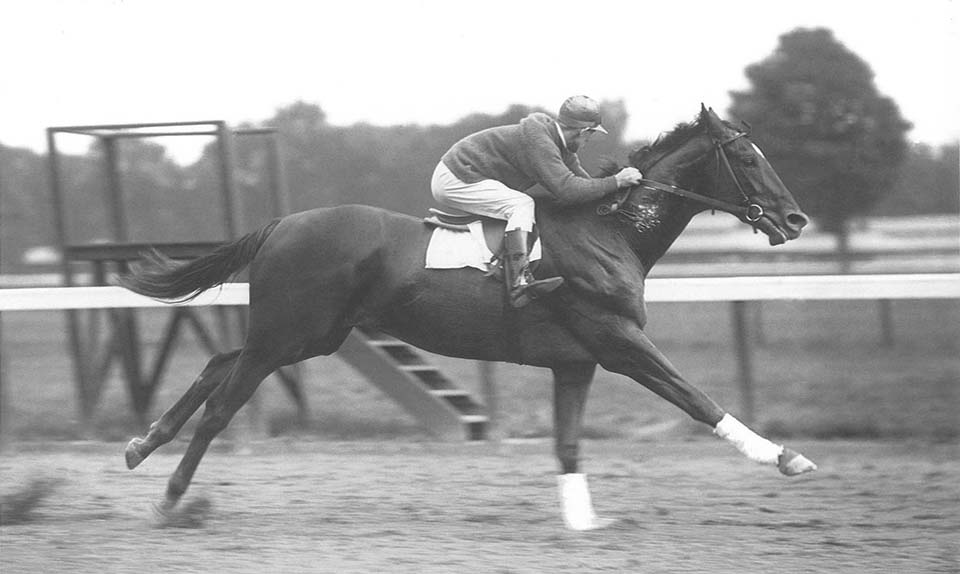Preakness Stakes 2021: Best Pick, Lineup and Odds
The legend and Hall of Famer Secretariat still holds the stakes (and track) record for the Preakness’s 1 3/16-mile distance when he stopped the clock in 1:53 in 1973 en route to his win in that year’s Triple Crown.
Initially, the timing of the race was questioned as the official clock malfunctioned and the timer recorded a slower final than what was recorded by clockers for the Daily Racing Form. Strangely, the dispute was not resolved for nearly 30 years until 2012, when newer technology allowed for a forensic review of the videotapes and an accurate calculation of the actual final time, which was formally recorded as 1:53.
Last year, the filly Swiss Skydiver ran the second-fastest Preakness of all time in 1:53.28 when she defeated Kentucky Derby winner Authentic by a neck. She became just the sixth filly in history to win the Preakness.
Curlin in 2007 owns the third-fastest time in Preakness Stakes history, having logged 1:53.46 for his head victory over Kentucky Derby winner Street Sense. Louis Quatorze in 1996 earned a final time of 1:53 2/5 for his wire-to-wire score to own the third-fastest time in Preakness Stakes history.
Tank’s Prospect in 1985 also logged 1:53 2/5, then Gate Dancer (1984) and Summer Squall (1990) time in 1984 were both 1:53 3/5, and Sunday Silence was 1:53 4/5 when he defeated Belmont Stakes Easy Goer (1998) by a nose.
Preakness Stakes Statistics:
Fastest first quarter – :22 2/5, Flag Raiser (1965); Fight Over (1984), Eternal Prince (1985) and Vicar (1999), Warrior’s Charge (2019)
Fastest second quarter – :22 2/5, Bold Forbes (1976)
Fastest first half-mile – :45, Bold Forbes (1976)
Fastest first three-quarters – 1:09, Bold Forbes (1976)
Fastest first mile – 1:34 1/5, Secretariat (1973( Chief’s Crown (1985) and Sunday Silence (1989)
Fastest final 3/16ths – :18, Summer Squall (1990)
Related:2021 Preakness Stakes Picks: Our Contributors Like Baffert’s Boys
In 2013, the Maryland Jockey Club announced it would increase the purse for the Preakness Stakes from $1 million, which had been the figure since 1998, to $1.5 million where it remained until 2018. It will be worth $1 million this year, which is the same as last year. In 2019 it was worth $1.65 million. The Preakness purse has regularly been among the highest in American racing, which is expected as it’s one of the three classic races run each year and the middle jewel of the prestigious Triple Crown.
At its inauguration in 1873, the Preakness carried a value of $2,050, then went down to $1,000 the next year, and the first major increase occurred in 1919 when the race was boosted to $25,000. The purse then grew to $100,000 in 1946 and then $150,000 in 1959 where it was briefly the richest Triple Crown race. From 1979 to 1989, the Preakness purse rose four times from $200,000 to $500,000, before attaining its million-dollar status.
Shackleford in 2011 still has the distinction of taking home the most Preakness money as he earned $1.1 million. War of Will in 2019 earned $990,000. California Chrome (2014), Triple Crown winner American Pharoah (2015), Exaggerator (2016), Cloud Computing (2017) and Triple Crown winner Justify (2018) earned $900,000 for their connections. The filly Rachel Alexandra’s owners cashed a $660,000 check in 2009 and Big Brown’s owners received $650,000 for his win in 2008, as did Swiss Skydiver’s last year.
Preakness Stakes Lineup
In 145 editions of the Preakness Stakes (it was run in two divisions in 1918), 73 winners have left the post as the public’s betting choices. Since 1911, when pari-mutuel wagering made its debut at Pimlico, 28 Preakness favorites have started at odds of less than even-money and eighteen have won. Ten paid ¢.50-1 or less — Citation, 1948 (¢.10-1); Spectacular Bid, 1979 (¢.10-1); Count Fleet, 1943 (¢.15-1); Big Brown, 2008 (¢.20-1); Native Dancer, 1953 (.20-1); Secretariat, 1973 (¢.30-1); Nashua, 1955 (¢.30-1); War Admiral, 1937 (¢.35-1); Seattle Slew, 1977 (¢.40-1); Justify, 2018 (¢.40-1); Affirmed, 1978 (¢.50-1); and California Chrome, 2014 (¢.50-1).
In 1975 Master Derby earned his spot as the longest-priced Preakness winner when he returned $48.80. No horse has paid more in the years since. In 1925, Coventry left the gate at 21-1 and was worth $45.60. Display paid $40.70 at odds of 19-1 in 1926 while Bee Bee Bee in 1972 rewarded his backers with a $39.40 return at 18-1.
Other longshots include:
Oxbow, 2013 (15-1, $32.80)
Hindus, 1900 (15-1 $32)
Don Enrique, 1907 (15-1, $32)
Deputed Testamony, 1983 (14-1 $31)
Cloud Computing, 2017 (13-1, $28.80)
Bernardini, 2006 (12-1, $27.80)
Shackleford, 2011 (12-1, $27.20)
The Bart, 1886 (12-1 $26.40)
Miriam Lee has always been a horse racing fan thanks to trips to the tracks in her home state of Maryland with her father as kid. She owns an OTTB and is an advocate for promoting the sport among her peers. Miriam studies communication arts at Hood College and will receive her master’s degree in 2021, which she plans to use for a career in screenwriting. Her all-time favorite racehorse is Man O War.



